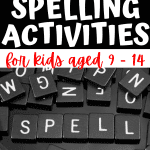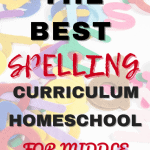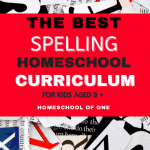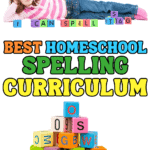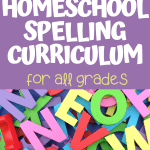The Homeschool Spelling Curriculum That Finally Helped
Finding a homeschool spelling curriculum that actually works can take some trial and error.
Over the years of homeschooling my son, we’ve tried everything from workbook drills to hands-on spelling games and adaptive online tools.
Some helped him feel confident and actually enjoy spelling, others didn’t last a week.
What I’ve learned is that the best curriculum isn’t one-size-fits-all. It depends on your child’s learning style, confidence level, and even how much time you can realistically commit each day.
This guide brings together the spelling programs we’ve personally used and trusted, along with a few standout free options, creative activities, and tools that have helped reinforce spelling in a low-stress way.
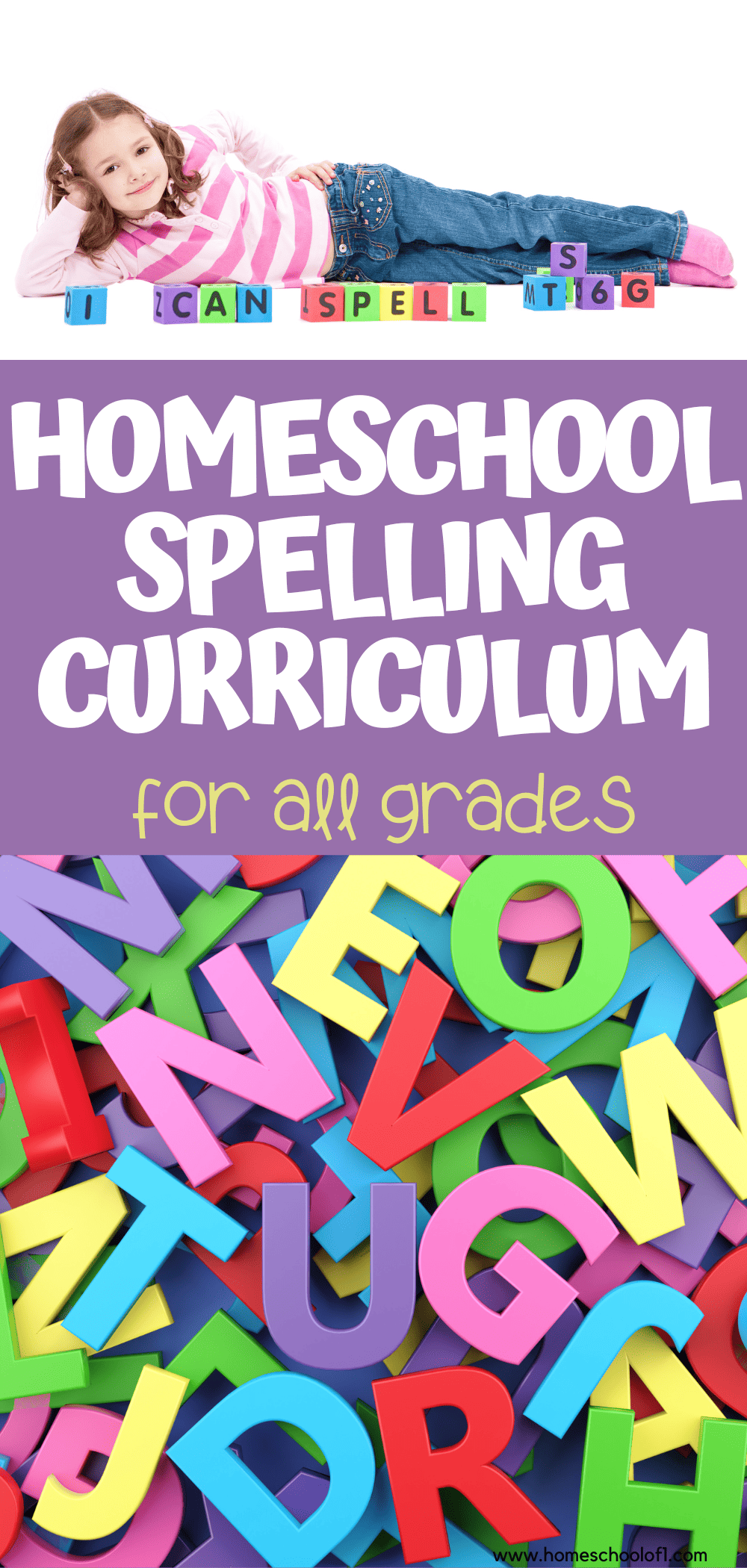
**This post may contain affiliate links. As an Amazon Associate and a participant in other affiliate programs, I earn a commission on qualifying purchases.**
Choosing a Spelling Program That Actually Fits
There’s no one-size-fits-all when it comes to spelling. What works for one child might frustrate another, so it’s worth thinking about a few key things before you commit to a program.
How Your Child Learns – Some kids do well with phonics-based instruction, others with visual word patterns or spelling rules. If memorizing lists has been a struggle, something more hands-on, like All About Spelling, might be a better fit than a traditional workbook.
What Stage They’re At – A kindergartner just starting to sound out CVC words has very different needs from a middle schooler tackling complex vocabulary. Look for a curriculum that matches your child’s current level, not just their grade.
How Much Time You Can Give – Some programs need more parent involvement. Spelling Power, for example, is teacher-led, while Night Zookeeper is designed for kids to use more independently. Pick something that works with your schedule, not against it.
Materials and Cost – If you prefer print, many options include books, flashcards, and extra tools. Others are digital or app-based. If budget’s tight, free tools like Spelling City can work as a supplement.
Can It Flex With Your Child? – If your child moves faster or slower than grade level, programs like Sequential Spelling, designed to adjust with progress, can take the pressure off and help them build skills at their own pace.
Simple Ways to Make Spelling Practice More Fun
If your child dreads spelling time, you’re not alone. We’ve had weeks where every word list felt like a chore, until we started mixing things up. Here are a few ways to make spelling more enjoyable at home without needing a big setup.
Play Word Games That Don’t Feel Like Work
Games like Hangman, Boggle, or even Scrabble can make a big difference. We’ve also used spelling apps on days when I needed something low-prep but still effective. They don’t always realize they’re practicing, it just feels like screen time.
Turn Practice Into a Friendly Competition
We’ve hosted mini spelling bees at home, sometimes just between parent and child. Picking the right-level word list and offering a small reward (even a silly trophy or choosing dinner) made it feel more like a game than a lesson.
Use Rewards Without Overdoing It
A simple point system worked well for us. Spelling five words correctly might earn screen time or a fun activity. It kept motivation up without turning every lesson into a battle.
Get Creative With Writing Tools
Letting kids write their spelling words with markers, stamps, or even paint helped break the routine. My son also liked making up goofy sentences or comics with his words, which worked especially well when the words were tricky.
Use the Words in Real Writing
Instead of keeping spelling separate, I started encouraging him to use the weekly word list in short stories or journal entries. It helped him remember the words better and improved his writing at the same time.
Change the Setting
Spelling outside with sidewalk chalk or making a scavenger hunt using word clues added novelty. Even just spelling words aloud while walking or tossing a ball back and forth changed the energy.
A little creativity goes a long way. You don’t need elaborate prep, just small changes to keep things interesting can make spelling feel less like work and more like part of your day.
Homeschool Spelling Curriculum
Over the years, we’ve tried quite a few spelling programs, some stuck, others didn’t. What worked best really depended on how much structure my son needed at the time and how independent he was willing to be.
Online Programs
- Wordela Homeschool – A personalized online program that adapts to your child’s pace, covering spelling, grammar, and vocabulary. Best for families who want a comprehensive language arts approach beyond just spelling.
- Night Zookeeper – Uses interactive games and creative storytelling to improve spelling in a fun, engaging way. Great for kids who enjoy gamified learning (Read our full Night Zookeeper review to see why we love it).
Discover the best complete secular homeschool curriculum!
Spelling Workbooks
When we needed something more hands-on, we used a mix of print-based spelling workbooks. Some were more effective than others, depending on the grade level and how much writing practice he needed.
| Curriculum | Best For | Grade Range | Why We Like It |
|---|---|---|---|
| Spectrum Spelling | Affordable, structured practice | K-6 | Simple, easy to follow, great for independent work |
| Evan Moor Spelling | Hands-on activities | 1st-6th | Includes fun exercises & grade-level word lists |
| Wordly Wise 3000 | Vocabulary & spelling combined | 2nd-HS | Focuses on word meanings & usage in context |
| Spelling Power | Self-paced mastery approach | 3rd-HS | Customizable spelling lists & diagnostic tests |
| Sequential Spelling | Struggling spellers & dyslexia | Multi-age | Emphasizes word families & patterns over memorization |
| 180 Days of Spelling | Daily practice & reinforcement | 1st-6th | Aligned with state standards, includes word sorting & analogies |
| Abeka Spelling | Traditional, structured lessons | 2nd-3rd | Builds spelling progressively with phonics integration |
| Frequently Misspelled Words | Middle schoolers mastering tricky words | 7th | Focuses on 400 commonly misspelled words |
| Spelling Workout | Gradual skill-building | Multi-age | Uses step-by-step lessons to improve proficiency |
| Spelling Plus | Meaning-based spelling instruction | Multi-age | Reinforces spelling rules & word structure |
Free Spelling Curriculum
There were definitely times when I didn’t want to spend more money on another curriculum, especially when we just needed extra practice or a short-term supplement.
These free spelling resources helped fill the gaps and kept things moving without adding to our budget.
- Spelling City – Provides free customizable spelling lists, interactive games, and activities for multiple grade levels. Great for kids who learn best through digital play.
- K12Reader – Offers free printable spelling worksheets and word lists for different grade levels. A great supplement for any homeschool spelling program.
- TLSBooks – Features spelling worksheets, word lists, and printable activities for grades K-6. Simple, effective, and easy to integrate into daily lessons.
- Education.com – Includes free printable spelling worksheets with resources designed for various grade levels.
- Spelling Training – An interactive online tool with free spelling practice and quizzes, ideal for kids who enjoy independent learning.
- Mr. Nussbaum Spellerz – A game-based spelling platform that turns learning into a fun, engaging challenge.
Looking for even more ways to practice? Check out these free spelling games for extra reinforcement!
If you need a full homeschool plan, don’t miss our best free homeschool curriculum guide!
More Ways to Practice Spelling at Home
Sometimes the best spelling practice happens outside the workbook. When we needed a break from structured lessons, we leaned on games, apps, and even spelling bee word lists to keep things interesting.
Using Spelling Bee Word Lists
We’ve used these Spelling Bee words as a simple way to challenge vocabulary without the pressure of a real competition.
I’d pull 10 words at a time that matched (or slightly stretched) my son’s level, then work them into stories or word games. If something felt too hard, we adjusted. No pressure, just steady practice.

Games That Made Spelling Fun
Spelling games like Bananagrams, Match and Spell, or even old-school Speak & Spell gave us easy ways to practice without worksheets.
Sometimes we’d make up our own challenges, like spelling words backward, or finding objects that matched spelling patterns.
Apps That Actually Helped
We’ve used apps like Spelling Games for Kids and Hooked on Spelling when I needed something low-prep but effective. He also liked quiz-style apps like Spelling Bee Quiz, they made it feel more like a game than a lesson.
These little shifts, word lists, short games, quick wins, helped reinforce spelling without burnout. And they made the tougher weeks a little easier.
We’ve learned that spelling success doesn’t come from one perfect program, it’s about finding the mix that works best for your child. Whether you use a structured workbook, digital tools, or sidewalk chalk, the goal is the same: build confidence and keep it low stress.
Last Updated on 15 May 2025 by Clare Brown

